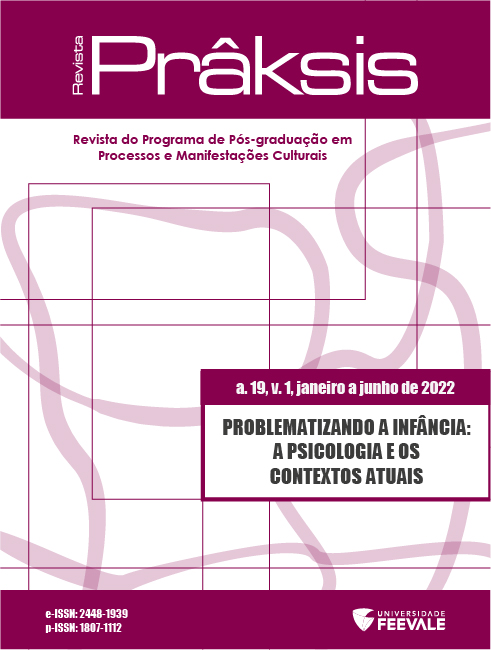LGBTQ+ CONSTRUCTION ON THE #FREETOLOVE CAMPAIGN IN CLOSE UP ADVERTISEMENT
LGBTQ+ CONSTRUCTION ON THE #FREETOLOVE CAMPAIGN
DOI:
https://doi.org/10.25112/rpr.v1.2724Keywords:
LGBTQ signs, #FreetoLove campaign, Advertisement, Semiotic AnalysisAbstract
The purpose of this study was to investigate the meaning construction of the signs contained in the #FreeToLove campaign in the Close Up advertisement that constructs LGBTQ+. This study applies both Ferdinand De Saussure's theory and methodology. The analysis was deeply discussed on the #FreeToLove campaign from the advertisement shot which was considered to construct the Lesbian, Gay, Bisexual, Transgender, Queer, and Others (LGBTQ+) sign through the verbal aspect in the Close Up advertisement. This campaign aims to show and fight for different types of love and mutual respect for all love on various platforms ranging from couples of different ages, social caste/class, culture/race, religion, and even same-sex relationships. In the advertisement, same-sex relationship elements are seen to be more dominant than other elements. The formation of the idea originated from the existence of a declaration legalizing LGBT that has been included in the law and given protection. The campaign's prejudice was more towards LGBTQ+ when Unilever, which is the owner of Close Up, also supported LGBTQ + and through the Close Up brand, which represented the closeness of the #FreeToLove campaign, began campaigning and producing advertisements and films. Prejudice can lead to acts of discrimination that can be detrimental. LGBTQ+ symbols have been included in advertisements to create a new culture that leads people to know about their existence. People who didn't know before can find out through a Close Up ad campaign in 274 places in the world.
References
ADE, D. D. Konstruksi Identitas Waria dalam Hubungan Berpasangan: Studi Kasus CBO (Community Base Organization) Kembang Kuning. Mozaik Humaniora Journal, 19 (1), p. 18–25, 2019.
BRIANDANA, R. Representation of Political Ideology in Advertising: Semiotics Analysis in Indonesia Television. International Journal of English Literature and Social Sciences (IJELS), 764-774, 2019. Available at Google Scholar.
DAMAYANTI, Rita. Laporan Kajian: Pandangan Masyarakat terhadap Lesbian, Gay, Biseksual dan Transgender (LGBT) di Jakarta, Bogor, Depok dan Tangerang 2015, p. 4, 2015. Report of Survey (32 p.). Available at: http://www.kemenpppa.go.id. Retrieved on: 14 July 2021.
DENZIN, Norman K.; LINCOLN, Yvonna S. Handbook Of Qualitative Research. Yogyakarta: Pustaka Pelajar, 2009. Paperback (799 p.). ISBN: 978-602-84.
FATMAWATI, F. Religiusitas Waria Di Surabaya. Lakon: Jurnal Kajian Sastra dan Budaya, 8(2), 87. 2019. Doi: https://doi.org/10.20473/lakon.v8i2.19778.
HARDY, Janet W.; EASTON, Dossie. The Ethical Slut, Third Edition: A Practical Guide to Polyamory, Open Relationships, and Other Freedoms in Sex and Love. Berkeley: Ten Speed Press, 2017. E-Book (320 p.). ISBN-13: 978-0399579660.
INDRAYATI, N. K.; DWICAHYANI, N.; PRASTOWO, H. E.; VINASTHIKA, P. A.; GANIES, G. S. Proses Pengambilan Keputusan Menjadi LGBT pada Individu dengan Karakteristik Religius. INSAN Jurnal Psikologi Dan Kesehatan Mental, 4(1), p.43, 2020. https://doi.org/10.20473/jpkm.v4i12019.43-53.
MAIMUNAH. The U. S. Homeland Security’s Biopolitics in the Age of “Terrorism” Pemberdayaan Waria Seniman Ludruk dalam Program Penanggulangan HIV / AIDS (Empowering Transgender Ludruk Artists in HIV / AIDS Prevention Program), 16 (1), 2016.
MASSAY, E. M. A review on the prevailing gaps in women’ s sexual and reproductive health rights in Tanzania’s National Health Policy 2017. Jurnal Sosiologi Dialektika, 16(1), p. 1–11, 2021.
MEAD, George H. Mind, Self, and Society: from the Standpoint of Social Behaviourist. (C. W. Morris, Ed.). Chicago IL: University of Chicago Press, 1934. E-Book (440 p.). ISBN: 978-0226516684.
MOXON, Sharon. Gay Symbols. Sappo Speaks: The lesbian and Gay Quarterly Journal at UCSD. San Diego: University of California, p. 4-5, 1985. Available at: https://library.ucsd.edu. Retrieved on: 15 July 2021.
MULYANA, Ahmad. Representasi Gaya Hidup Pria Metrosexual Di Majalah Pria Ibukota. Jurnal Visi Komunikasi, p. 69-86, 2017. DOI:10.22441/JVK.V13I1.370.
NAIMAH, M. J.; WINARDI, B.; LESTARI, P. Knowledge about sexually transmitted infections does not associate with attitude towards LGBT behavior. Majalah Obstetri & Ginekologi, 27(3), p. 99, 2020. DOI: https://doi.org/10.20473/mog.v27i32019.99-102.
NÖTH, Winfried. Handbook of Semiotics. Indiana: Indiana Univeristy Press, 1990. E-book (592 p.). Available at: https://www.jstor.org/stable/j.ctv14npk46. Retrieved on: 7 July 2021.
O’BRIEN, Michelle E. The Influence of Donors on Cross Class Social Movements: Same Sex Marriage and Trans Rights Campaigns in New York State. Social Movement Studies. Journal of Social Movement Study, vol. 18, p. 586-601, 2019. Available at: https://doi.org/10.1080/14742837.2019.1598354. Retrieved on: 7 July 2021.
PAOLETTI, Jo B. The gendering of infants’ and toddlers’ clothing in America, in Queer Futures: Reconsidering Ethics, Activism, and the Political. New York: Routledge, 1997. E-Book (254 p.). ISBN-13: 978-1409437109
POLLAY, Richard. The Distorted Mirror: Reflections on the Unintended Consequences of Advertising. Journal of Marketing, 50, pp. 18-36, 1986. Available at: doi:10.1353/asr.2000.0012. Retrieved on: 14 July 2021.
SMITH, Veronica. Visual Persuasion: Issues in the Translation of the Visual in Advertising. Meta, volume 53, issue 1, p. 44–61, 2008. Available at: https://doi.org/10.7202/017973ar. Retrieved on: 15 July 2021.
SPOT. Closeup: The Journey to Be Free to Love, 2021. Available at: https://www.close-up.com/ph. Retrieved on: 7 July 2021.
STETZ, Margaret D. Oscar Wilde at the Movies: British Sexual Politics and The Green Carnation (1960). Biography, volume 23, number 1, winter 2000, pp. 90–107, 2000. Available at: https://www.jstor.org/stable/i23538663. Retrieved on: 14 July 2021.
SURIYASARN, Busakorn. Gender identity and sexual orientation in Thailand. Bamgkok: International Labour Organization, p. 5-8, 2014. Report of Field Study (140 p.). Available at: https://www.ilo.org/publication/wcms_356950. Retrieved on: 14 July 2021.
Downloads
Published
How to Cite
Issue
Section
License
Copyright (c) 2021 Moses Pandin

This work is licensed under a Creative Commons Attribution 4.0 International License.
• Os autores mantêm os direitos autorais e concedem à revista o direito de primeira publicação com o trabalho licenciado sob a Licença Creative Commons - Attribution 4.0 International (CC BY 4.0).
• Os autores são estimulados a publicar e distribuir seu trabalho online (ex.: em repositórios institucionais ou na sua página pessoal), pois isso pode aumentar o impacto e a citação do trabalho publicado.


